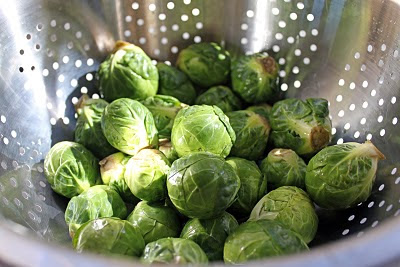After seeing the movie Julie & Julia, the film that intertwines the story of the legendary grande dame of food Julia Child with food blogger Julie Powell, I knew the classic Boeuf à la Bourguignonne that was immortalized throughout the story would finally end up on our table.
So last week when it seemed that we finally had what we call “winter” here in southern California, basically it just rained for about 5 days in a row, I decided it was time to make it. I followed the recipe verbatim, not wanting to disappoint Julia I suppose.
There are really not that many ingredients but the steps and the time involved are the key factors. What I found was that even a mediocre cut of beef works quite well, since it cooks for so long in the wine, it breaks down beautifully. For the wine, buy something you would enjoy drinking along with the meal. I used a young red Beaujolais. But a nice Burgundy or a full-bodied Chianti would work well too. Traditionally boiled potatoes are served with this dish, but buttered noodles or steamed rice may be substituted.
There are really not that many ingredients but the steps and the time involved are the key factors. What I found was that even a mediocre cut of beef works quite well, since it cooks for so long in the wine, it breaks down beautifully. For the wine, buy something you would enjoy drinking along with the meal. I used a young red Beaujolais. But a nice Burgundy or a full-bodied Chianti would work well too. Traditionally boiled potatoes are served with this dish, but buttered noodles or steamed rice may be substituted.
Enjoy!
Shannon
Boeuf Bourguignon
From Julia Childs Mastering the Art of French Cooking
6 ounces chunk of bacon
1 Tbsp. olive oil
3 lbs. lean stewing beef, cut into 2 inch cubes
1 sliced carrot
1 sliced onion
1 tsp. salt
¼ tsp. pepper
2 Tbsp. flour
3 cups red wine
2 to 3 cups brown beef stock
1 Tbsp. tomato paste
2 cloves mashed garlic
½ tsp. thyme
1 crumbled bay leaf
18 to 24 small white onions, brown braised in stock
1 lb. quartered fresh mushrooms sautéed in butter
Parsley sprigs
Remove rind from bacon, and cut bacon into lardons (sticks, 1/4 inch thick and 1 1/2 inches long). Simmer rind and bacon for 10 minutes in 1 1/2 quarts of water. Drain and dry.
Preheat oven to 450 degrees.
Sauté the bacon in the oil over moderate heat for 2 to 3 minutes to brown lightly. Remove to a side dish with a slotted spoon. Set casserole aside. Reheat until fat is almost smoking before you sauté the beef.
Dry the stewing beef in paper towels; it will not brown if it is damp. Sauté it, a few pieces at a time, in the hot oil and bacon fat until nicely browned on all sides. Add it to the bacon.
In the same fat, brown the sliced vegetables. Pour out the sautéing fat.
Return the beef and bacon to the casserole and toss with the salt and pepper. Then sprinkle on the flour and toss again to coat the beef lightly with the flour. Set casserole uncovered in middle position of preheated oven for 4 minutes. Toss the meat and return to oven for 4 minutes more. (This browns the flour and covers the meat with a light crust.) Remove casserole, and turn oven down to 325 degrees.
Stir in the wine, and enough stock or bouillon so that the meat is barely covered. Add the tomato paste, garlic, herbs, and bacon rind. Bring to simmer on top of the stove. Then cover the casserole and set in lower third of preheated oven. Regulate heat so liquid simmers very slowly for 2 1/2 to 3 hours. The meat is done when a fork pierces it easily.
While the beef is cooking, prepare the onions and mushrooms. Set them aside until needed.
When the meat is tender, pour the contents of the casserole into a sieve set over a saucepan. Wash out the casserole and return the beef and bacon to it. Distribute the cooked onions and mushrooms over the meat.
Skim fat off the sauce. Simmer sauce for a minute or two, skimming off additional fat as it rises. You should have about 2 1/2 cups of sauce thick enough to coat a spoon lightly. If too thin, boil it down rapidly. If too thick, mix in a few tablespoons of stock or canned bouillon. Taste carefully for seasoning. Pour the sauce over the meat and vegetables. Recipe may be completed in advance to this point.
For immediate serving: Cover the casserole and simmer for 2 to 3 minutes, basting the meat and vegetables with the sauce several times. Serve in its casserole, or arrange the stew on a platter surrounded with potatoes, noodles, or rice, and decorated with parsley.
For later serving: When cold, cover and refrigerate. About 15 to 20 minutes before serving, bring to the simmer, cover, and simmer very slowly for 10 minutes, occasionally basting the meat and vegetables with the sauce.
Serves 6
Red meat is not bad for you. Now blue-green meat, that’s bad for you! ~Tommy Smothers
Red meat is not bad for you. Now blue-green meat, that’s bad for you! ~Tommy Smothers




















